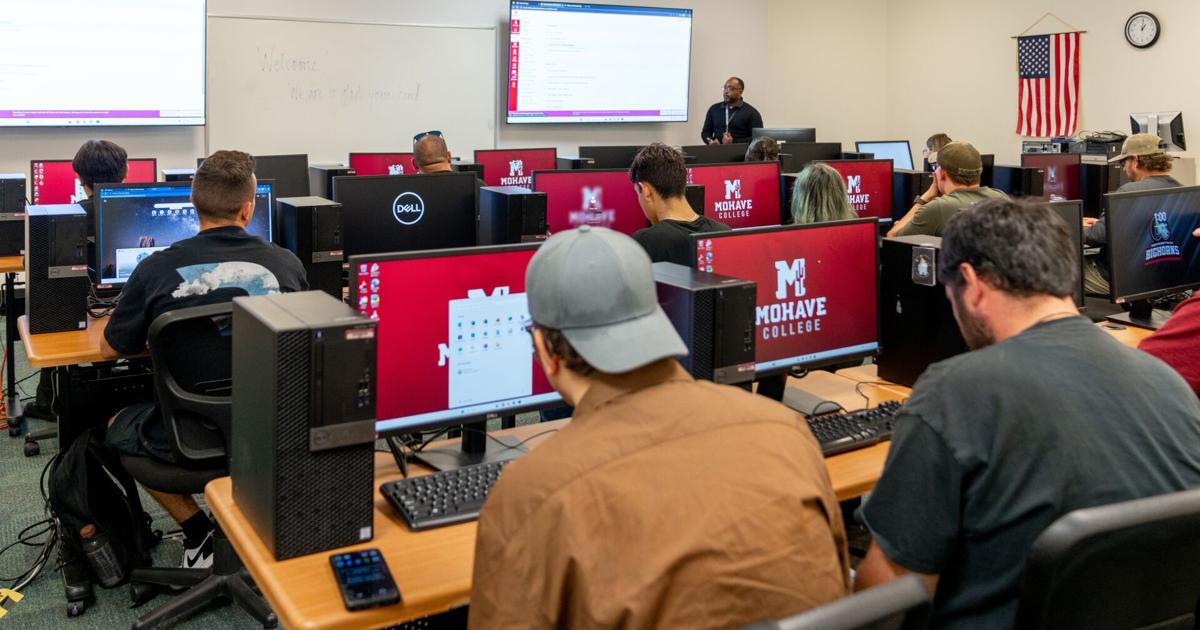A recent economic impact analysis reveals that Mohave College contributed $199 million in added income to Mohave County during fiscal year 2023–24, supporting over 3,000 jobs and accounting for 2.8% of the county’s gross regional product.
The study, conducted by labor market analytics firm Lightcast, assessed the college’s influence through operational spending, student and alumni activity, construction projects, and long-term economic benefits.
The institution supported 3,038 jobs countywide, including direct employment, contractor roles, and positions sustained indirectly through student spending and graduate productivity. This represents about 3.6% of total employment in the region.
The largest economic contribution came from alumni, who generated $158 million in additional local income. This reflects higher lifetime earnings and improved business productivity in sectors such as healthcare, social services, and skilled trades.
Taxpayers received long-term returns on their investment: $31.8 million in present-value benefits compared to $30.8 million in state and local funding. This includes $28.1 million in future tax revenue and $3.7 million in public savings from reduced healthcare use, lower crime rates, and decreased reliance on social programs.
Modeling showed that without public funding, enrollment would decline to levels that would threaten the college’s financial sustainability.
Students also benefit significantly: every dollar invested in education at Mohave College yields $6.30 in higher future earnings, equivalent to a 21.9% annual return. The average student completed 12.7 credit hours, with each hour adding an estimated $124 to their lifetime income.
Student presence boosts the local economy: 422 local students who might have left the county for education stayed due to the college, while 551 relocated to attend. These 973 individuals spent $11.1 million on housing, transportation, and living expenses, supporting 94 jobs.
Operational spending added $42.9 million to the economy, with a net impact of $32.4 million after accounting for alternative uses of funds, sustaining 691 jobs.
Capital investments totaled $6.7 million, including student housing in Bullhead City and the Advanced Manufacturing Training Center in Kingman. These projects generated $2.6 million in economic activity and supported 40 jobs during construction.
— news from mohavedailynews.com
— News Original —
Study: Mohave College drives $199 million economic impact across Mohave County
Mohave College Drives $199 Million Annual Impact in Mohave County n nA new economic impact study shows Mohave College generated $199 million in added income for Mohave County in fiscal year 2023–24, supporting more than 3,000 jobs and accounting for 2.8 percent of the county’s gross regional product. n nThe analysis, conducted by labor market firm Lightcast, evaluated the college’s impact through its operations, student and alumni contributions, construction activity, and long-term economic benefits. n n1. College activity supports one in every 28 jobs n nThe study found that Mohave College supported 3,038 jobs throughout the county. This total includes faculty and staff positions, contractors and vendors, and jobs supported indirectly by student spending and alumni productivity. The job support figure represents approximately 3.6 percent of total employment in Mohave County. n n2. Alumni contributions are the largest source of economic value n nFormer students generated $158 million in added income across the local economy. This impact comes from higher lifetime earnings and the increased productivity of businesses employing graduates. Alumni are working in healthcare, social services, skilled trades, and other key industries in the region. n n3. Taxpayers receive $31.8 million in long-term benefits n nThe report estimates that state and local governments invested $30.8 million into the college during the study year. In return, they will receive a combined $31.8 million in present-value benefits over the course of students’ working lives. These include $28.1 million in additional tax revenue and $3.7 million in public savings from lower healthcare costs, reduced crime, and decreased use of social services. n nResearchers modeled whether the college could sustain operations without public funding. The analysis found that without state and local support, enrollment would drop to levels that would make the college financially unviable. n n4. Students receive strong returns on their education n nFor every dollar students invest in attending Mohave College, they receive $6.30 in higher future earnings. This equates to an annual return of 21.9 percent. The average student at Mohave earned 12.7 credit hours in the study year, with each credit hour estimated to add $124 to their lifetime income. n n5. Student spending adds millions to the economy n nThe report found that 422 local students who would have left the county for education elsewhere instead remained due to Mohave College. Another 551 students moved to Mohave County to attend. These 973 students spent a combined $11.1 million in the region on housing, transportation, and other living expenses, supporting 94 jobs. n n6. Day-to-day operations generate long-term economic activity n nThe college’s annual operations spending added $42.9 million to the local economy before adjustments. After accounting for alternate uses of the same funds, the net impact totaled $32.4 million, supporting 691 jobs. n n7. Capital projects contribute short-term boosts n nDuring the study year, Mohave College invested $6.7 million in construction projects, including student housing in Bullhead City and the Advanced Manufacturing Training Center in Kingman. These projects added $2.6 million in economic activity and supported 40 jobs during the construction period.
